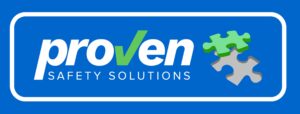Taking accurate and comprehensive meeting minutes is crucial for documenting the proceedings and decisions of a meeting. The specific requirements for taking meeting minutes can vary depending on the organization and its governing rules, but generally, the following elements are considered important:
Meeting details
Start with the basics, such as the name of the organization, date, time, location, and type of meeting (e.g., regular board meeting, committee meeting, etc.).
Attendees
Record the names and titles of all attendees, including board members, executives, staff, and any guests or observers.
Agenda
Include a copy of the meeting agenda or outline the topics and issues to be discussed. Note the order in which they were addressed.
Motions and decisions
Clearly document any motions or proposals made during the meeting, along with the name of the person who made the motion and the name of the person who seconded it.
Discussion points
Summarize the key points of the discussions and debates that took place during the meeting. Focus on important arguments and any new information presented.
Voting results
Record the outcome of all votes, indicating whether each motion was approved, rejected, or if it was tabled for further consideration.
Action items and responsibilities:
List any action items, along with the names of individuals responsible for completing them. Include deadlines and any follow-up required.
Reports and presentations
Note any reports presented during the meeting, and briefly summarize their content.
Public comments and questions
If applicable, include a summary of public comments or questions made during the meeting.
Recording abstentions, adjournments, and conflicts of interest
If any attendees abstained from voting or declared a conflict of interest, make sure to document this information. Record the time the meeting was officially adjourned.
Attachments and additional materials
If there are any documents, presentations, or reports presented during the meeting, reference them in the minutes or attach them as annexes.
Formatting and clarity
Ensure the minutes are well-structured, easy to read, and follow a logical sequence of events. Use clear language and avoid jargon.
Review and approval
After the meeting, distribute the draft minutes to relevant participants for review and corrections. Once approved, the minutes become an official record of the meeting.
Retention and accessibility
Store the meeting minutes in a secure and easily accessible location, ensuring they are available for future reference and compliance purposes.
Remember that meeting minutes serve as an official record of the meeting’s proceedings and decisions. Accuracy and impartiality are crucial to maintain the organization’s integrity and to provide a reliable reference for future decision-making and legal purposes.
Proven Safety Solutions save time and money!
For specific, tailored advice, or support for your organisation, contact Proven Safety Solutions today on 0400023404 to discuss and improve your confidential circumstances.
If you have any specific aspects, you’d like more information on or if you have further questions, reach out by clicking here!
This blog has been written with the aid of software, including search engines and writing tools, then checked by our team prior to release. It is general in nature.



